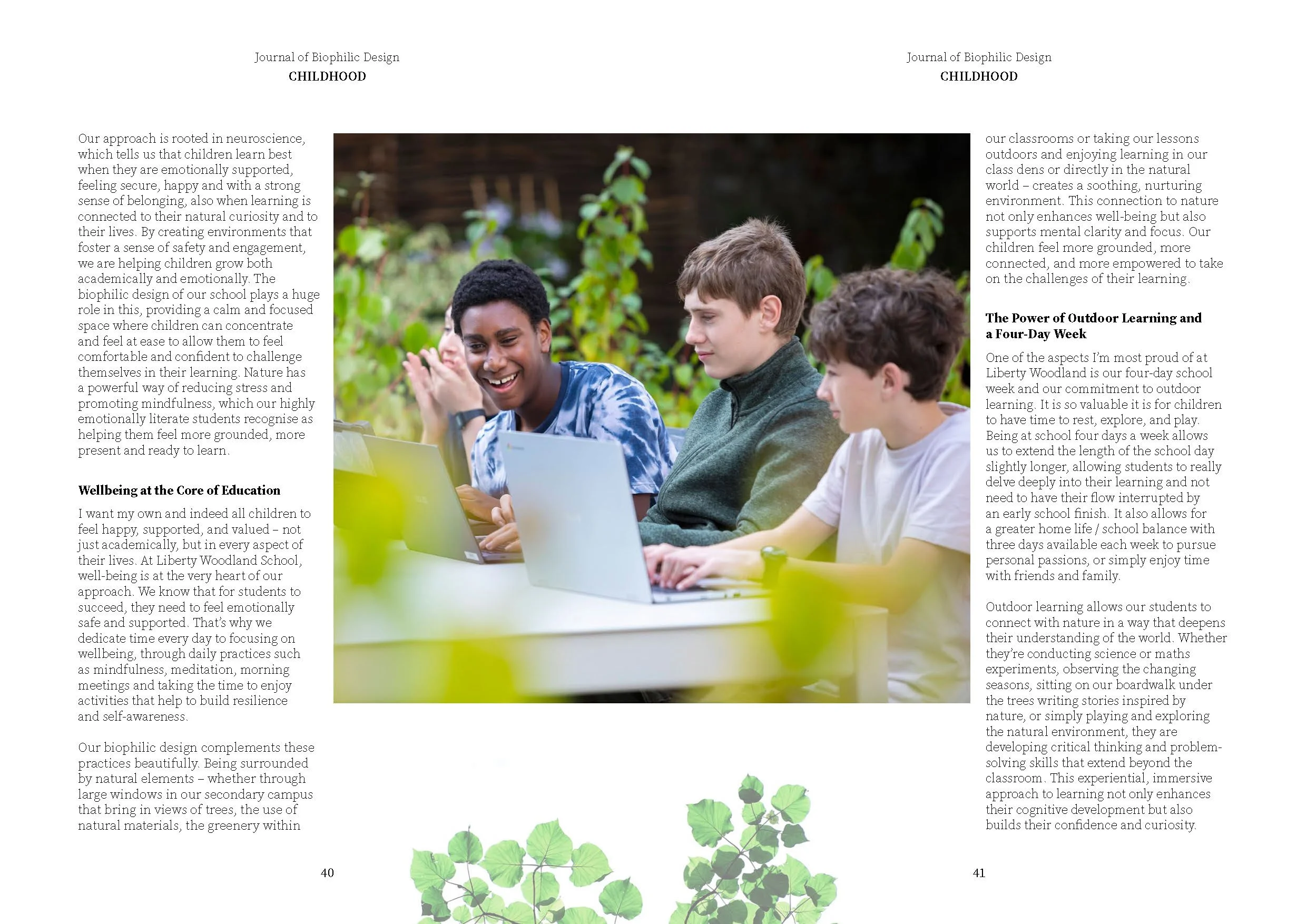Journal of Biophilic Design- Issue 13 - Childhood
Journal of Biophilic Design- Issue 13 - Childhood
Why dedicate a whole issue to “childhood” when issue 7 of the Journal was focused on Education? There is a great deal of research which clearly states just how important nature connection is for children’s brain development, from boosting cognitive and sensory development, supporting emotional and social growth, improving focus, attention, creativity and imagination as well as promoting physical health and coordination. Plus, it also builds a connection to the environment. With our planet in a crisis, we need the future generation to fully appreciate just how wonderful and beautiful our living world is. I ask nearly everyone who comes onto our podcast series what inspired them to do the role they do making places better for humans and planet through creating and designing a greater connection to the natural world, and all of them have said that they had exposure to nature at an early age.
We forget just how important those early years are for us. Whether that’s digging a hole in the sand by the beach, or building mud pies, riding our bikes through the park, playing football in a field or just idly wandering with our dog avoiding the washing up.
Some children aren’t lucky enough to have exposure to our beautiful natural world. They might live in a built-up city where there are no green spaces, or they might be restricted on being able to get outside for whatever reason. This is why biophilic design is SO vital, not only in urban design, including pocket parks, green streets, urban farms even, but also bringing nature inside the schools, hospitals, care centres wherever our next generation is.
There are some amazing designs and examples in this issue, of how biophilic design has transformed not only the space but also the lives of the children experiencing it.
I hope you enjoy this issue, and also remember that it’s also ok to release your inner child, go kick those leaves in the park, splash around by the water’s edge, collect leaves and acorns for your desk at home or anything else you used to love to do when you were a kid. Just because you are your age, it doesn’t mean you have to forget what brought you joy back then. Nature is there for everyone, whatever you do, however old you are, wherever you are in the world. Take a moment, as Steve Edge says in his article in this issue, to just stand and stare.
Did you know you can subscribe and become a member of the Journal and get access to all back issues of the Journal too? https://journalofbiophilicdesign.com/subscribe-as-a-member
I absolutely love this issue. I suppose maybe because I still feel that childlike feeling of fun and awe I my heart when I’m out in nature. I still can’t help but stand and stare at a little acorn sitting growing on an oak tree branch, or marvel at the curling hairy fingers of a young fern about to fill the forest with all the other ferns with tender arms of fractals and lime green.
There are so many examples of great design for children, including spaces where kids can’t get out, or need special care. Plus, the issue is full of reminders why nature is good for us. Connecting children to nature at an early age is so important. It is why I am campaigning for more green spaces in cities, towns, everywhere. Access to nature should be a human right, we are nature, and we must never forget that when we are designing the new hospital, shopping arcade or school. Cutting ourselves off from nature is where it’s all gone wrong. From the industrial revolution you could argue, we have increasingly shut ourselves inside white walls and cold grey environments. Our Journal and the whole Biophilic Design movement aims to reverse this trend, to reconnect us back to our rightful place alongside all life on this amazingly beautiful and inspiring planet that we are part of.
Thank you for taking the time to read this issue, and to be part of something which is so beautiful and nurturing, for our cities, schools, healthcare, towns, planet and each other.
We offer a network if you’d like to join and boost the movement, we would love you to join us.


















